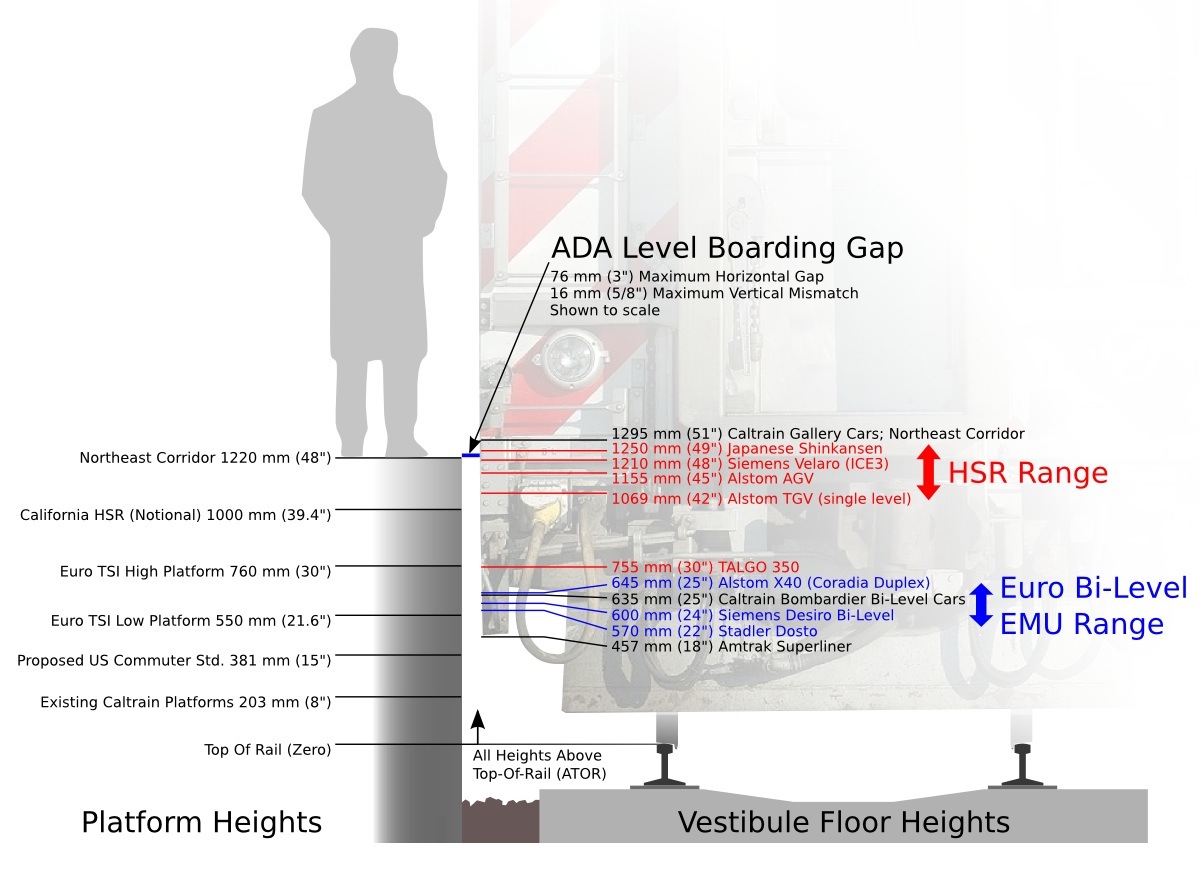Couple reasons I can think of.I always wondered why Brightline went with high-level platforms when everything else in Florida is low level. How much money would they have saved if they went this route? Stations would be cheaper to construct and those expensive long freight bypasses would have been eliminated. The one foot gap extensions would have been adequate to allow operation of both freight and passenger trains through low-platform stations. Tri-Rail could have used the same station platforms and there would be no need for double platform stations.
One, disability regulations regarding trains and level boarding have tightened considerably in the last decade or so. Many of the commuter rail and light rail systems as currently built would not comply with them if not grandfathered in. For example, the light rail system in my hometown of Denver uses mini full-height platforms at each end of the station to board wheelchairs. That practice is no longer permitted.
Second, high platforms result in lower station dwell time, and not just for disabled passengers (though it certainly helps them too). Normal passengers can embark and disembark slightly faster since it's as easy as walking through a door and they don't have to slow down and watch their step, and disabled passengers can treat it just like any other door as well. To use my Denver light rail example again: Under their system the train operator has to exit their cab and extend a bridge plate over the stairwell whenever a passenger in a wheelchair wishes to board, inevitably leading to them departing the station way behind schedule. Meanwhile on their newer commuter lines with level boarding and high platforms, it's as easy as rolling on and off, no operator intervention required.
Finally, the advantage of going "all high" is a completely level and accessible interior. We here in the States are blessed with an extremely generous loading gauge, and our platform heights can make full use of it. With high platform level boarding, there are no steps between cars, no height changes to navigate. This is mainly an advantage to disabled persons as it makes the whole train accessible to them, but it also improves passenger flow.
EDIT: Here's a good image showing how much taller American high platforms (~48") are compared to most of the rest of the world:

Last edited:














































